Hey!?! Didja know we didn't have a link to the BS2 code for the Sumovore BS2 add-on board? Well, we did, but it was on the news posting, not the BS2 adapter board page (it does now!). Grant did a great job setting up framework for a great dual-purpose BS2-controlled Sumovore. Set it down on […]
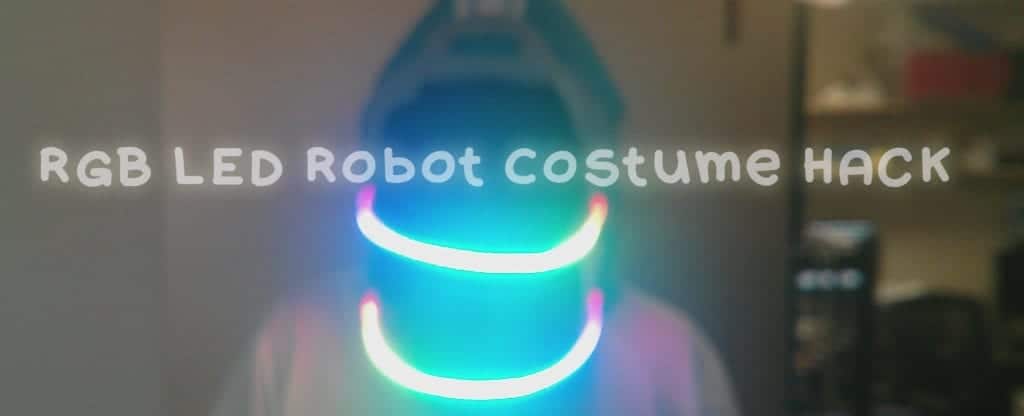
Robot Costume Hack

Since Halloween is just around the corner we've built and published a few projects in order to give some ideas to the DIY costume-inclined folks. One is DIY Halloween RGB LED Kitty Ears and two is Halloween LED Witch Hat.
So for this third hack we started with an online-bought robot costume, but being a creative tech people, we couldn't resist making it better by using some brilliant LED strips that react to sound.
Supplies used:
- 3 x 5V RGB LED Stripxels WS2812B (30 per meter)
- 1 x 5V RGB Addressable LED strip, 1M (144 per meter)
- 1 x MEMS Microphone Board
- 1 x PJRC Teensy USB Board, Version 3.2
- 5 x Losi Micro-T MX2.0 2-pin connector set, wired
- 2 x Lithium Polymer Battery - 2000mAh (Lipo)
The Teensy was chosen because it has hardware based Fast-Fourier-Transform optimizations, and lots of memory.
The dense LEDs (144 per meter) were used on the helmet. More spaced apart (30 per meter) were used on the arms. All of them drive from one Teensy receiving analog signal from the microphone located in the helmet. The microphone captures both the voice of the wearer and ambient sounds.
Here's what it looks like reacting to the music:
Technical Build:
The idea was to attach two denser LED strips to the face mask guard and the rest to the arms of the costume. They both would react to ambient sound and light up depending on the frequency of sound. The helmet's strip would have the lower frequencies in the middle and the arms would have them start at the wrists.
The face mask guard took 52 LEDs per strip and arms got 25 LEDs per arm. These calculations are reflected in the code below.
For the arms, I divided each LED strip into two sections (since the costume itself had separate foam pieces for forearm and shoulder), and gave them their own battery. That allowed me to have a simple 2 pin connection for joining the arms to the helmet.
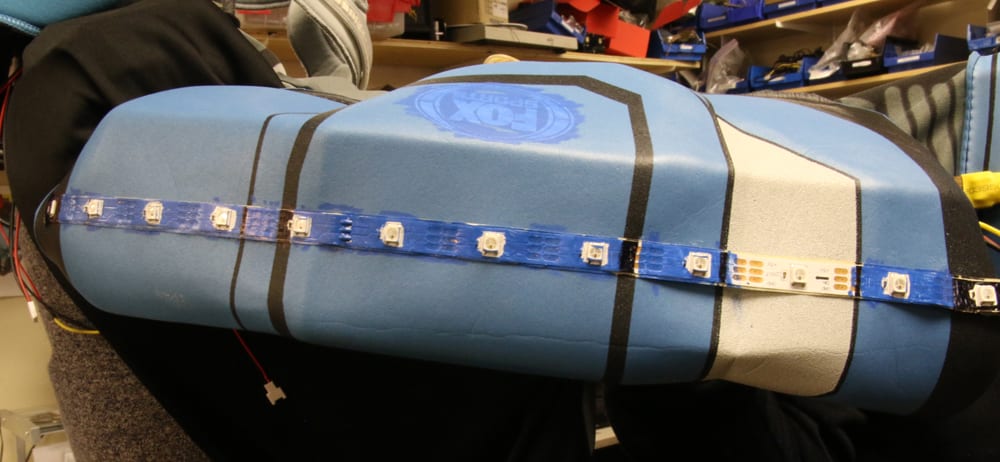
One problem when dealing with RGB Strips on wearables is that the solder pads are small and the wires break off too easily. I tried to minimize this by adhering a small wooden backing to the end of each strip. This acts like a cast and, when sealed with heat shrink, immobilizes the connections. I cut the supports on the laser cutter, but you can use anything. Popsicle sticks would work as well.
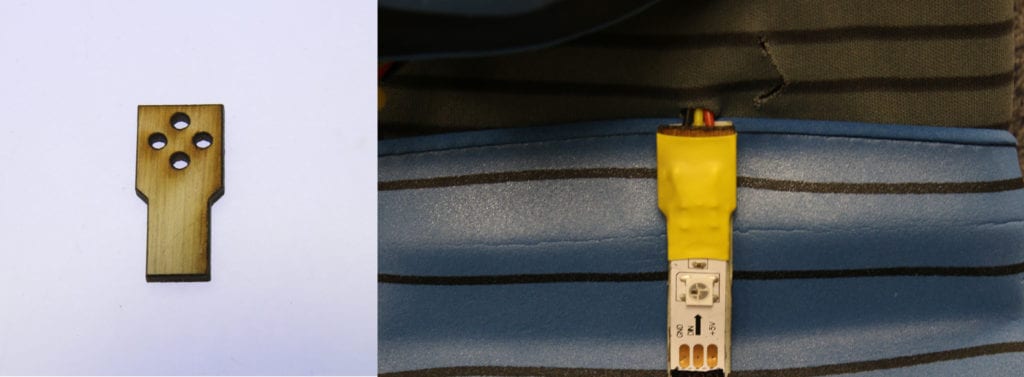
Here is the basic wiring diagram I used:
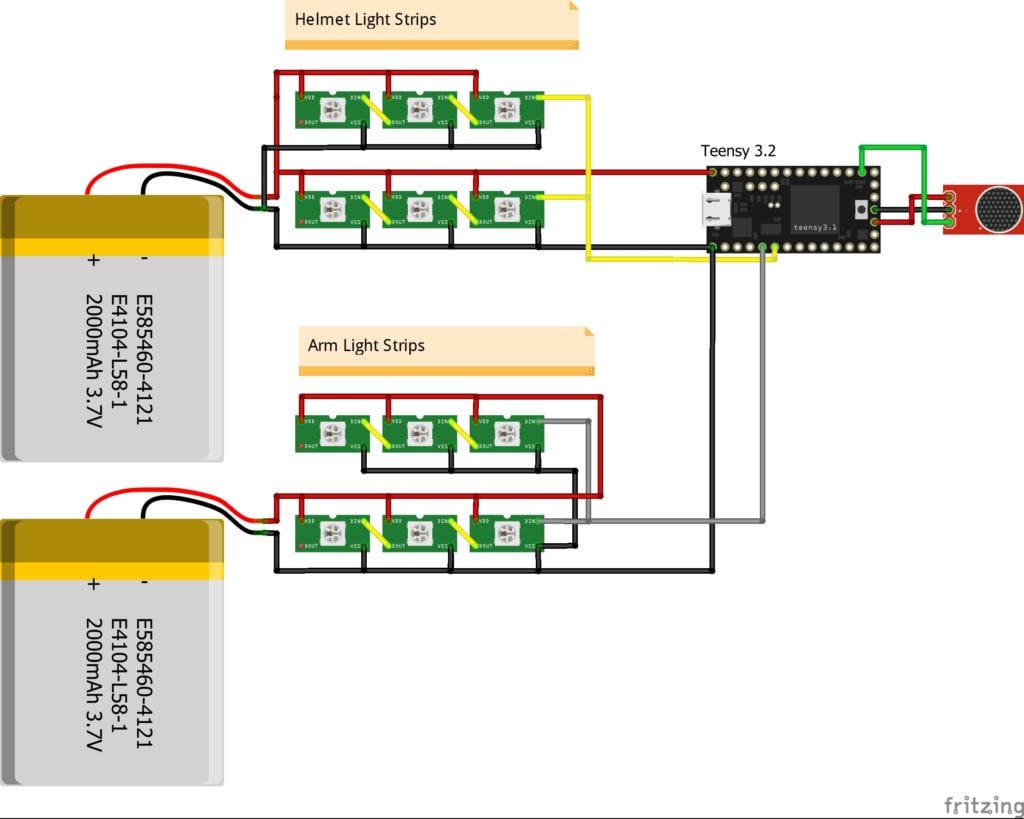
Software:
This code uses hardware support for FFT that's built into the Teensy. If you want to use a different processor, you will need to add a FFT library and modify the code accordingly.
I found some code online that was almost perfect for this project. Rather than reinventing the wheel, I reused that code, and modified it for my needs. Original credit has been left in the code.
Summary:
With Halloween just around the corner, this costume should be a hit at any event.. I can't wait to wear it!
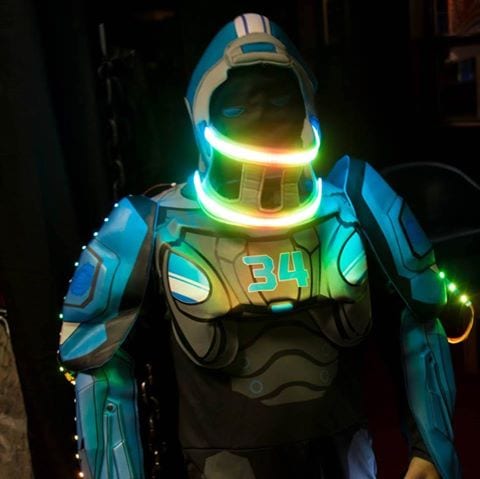
photo credit Lucky Shot (David Luckman)
MORE POSTS
New products added to our inventory include the L293D motor driver IC (a staple chip used in small-robot building), and the new clear-case GM4 servo gearmotor! No electronics, just a full 360° rotating, strong, modified servo! Check out the "New Products" link on the left toolbar for pricing and details.
Switching Power Supply 6VDC @ 500mA CAD15.72/USD11.95 Switching Power Supply - Perfect for Arduino Uno projects! Raspberry Pi NoIR Camera Board v2 - 8 Megapixels CAD52.55/USD39.95 8MP Camera without Infra Red Filter for Raspberry Pi Raspberry Pi Camera Module V2 CAD53.50/USD40.00 New! This 8MP Camera Module replaces the older 5MP unit! 4-channel Relay Arduino Interface […]
It's been a while since we've had this kit online, but due to some diligence we've found materials to update and re-issue it! Using the licensed "MillerEngine" (which we find to be a substantial improvement over the old Solarengine), we've changed the kit with a new black circuit board and updated documentation. Check it out […]
Solarbotics, Ltd. is not responsible for misprints or errors on product prices or information. For more information, please see our Terms and Conditions.
Warning: This product contains chemicals known to the State of California to cause cancer and birth defects or other reproductive harm.
Please visit www.P65Warnings.ca.gov for more information. This item was manufactured prior to August 31, 2018.

